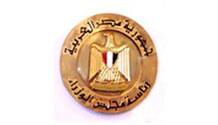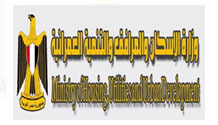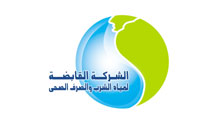Sustainable and eco cities are one of the biggest growth areas and trends impacting the ICT and real estate sectors today. Driven by the demand for advanced and 'always on' solutions and services, Egypt, Africa and Middle East are expected to play an extending role. The need to improve existing infrastructure and intelligently maximize current resources is further fueling the need to develop Sustainable cities. Sustainability brings value added benefits to governments and developers by increasing investment returns. While new services built on cutting edge technologies enrich citizens' quality of life.
Eco cities – Africa & Middle East is your choice to explore Latest sustainable and eco-friendly technology, products and services suitable to today’s demands
Eco cities – Africa & Middle East aims to provide both, the government and private sectors to explore latest green technologies, products, services and innovative solutions that would address today’s infrastructure demands for sustainable cities. This Pavilion will include Environmental Management Technology, Solar Energy, Wind Energy ,Waste to Energy and Water & Waste Management Systems & Services.
Executives and experts, from public and private sectors, will discuss how the building boom in the region has not yet met the latest in technology. However, the exhibition will showcase exhibitors who have taken concrete steps in creating such communities and how the application of Smart concepts is gradually becoming the differentiator for purchasing decision makers.
Africa and the Arab World are seeing a boom in real estate projects of different types, with multi-purpose projects becoming more dominant. Egypt comes at the forefront of these countries in terms of growth for many reasons, including a growing demand, a large population, and using real estate as a guaranteed investment. However, such growth will drive the market soon to set new rules for selecting which project to reside in, work in or even invest in. The decisive element along the coming 2 decades at least will be the kind of technology and environment standards employed for better living and working fields
Eco cities – Africa & Middle East therefore our exhibition is focusing on the main elements that should be taken in consideration when planning to establish green eco-cities.
Infrastructure of eco cities required designing locations for green buildings ,solar or wind plants ,biomass refineries, rainwater recycling ,central parks reclaimed by natural fertilizations like compost ,sanitary land filling areas ,stations for waste collecting and separation , stations for waste to energy ponds ,artificial lakes ,industrial parks ,smart roads and illumination ,centers of widely wifi covered areas, cloud networks.
Clean Energy
The Egyptian power sector is expected to attract investment of US$ 250 billion by 2019 across diverse areas of the energy sector
Egypt has an installed capacity of 267 Gigawatt (GW) as of March 2015, dominated by fossil fuels: the additional electricity demand creates a large opportunity for renewable energy sources.
Egypt's target to install 100 GW solar power capacity by 2022 could make it one of the largest solar power markets in Africa, creating (1 million) jobs.
Egypt to spend US$ 21.6 billion over the next 10 years on smart grid infrastructure Investment of around (US$ 4 billion) to roll out a new metering system and upgrade distribution networks in the country.
Egypt has the highest wind energy potential in the Middle East and North Africa (30 GW or close to the entire current generation capacity) and enjoys direct solar radiation between 2000-3200 kWh/m2/year across its large landmass. Regional integration also offers possibilities; a 3,000 MW Egypt-Saudi interconnector is being planned that will be operated with a zero-net trade basis as the periods of peak demand vary between the two nations.
The renewable equipment market is worth several billion dollars. In 2008, the Egyptian Supreme Energy Council approved the Egyptian Renewable Energy National Strategy to satisfy 20 percent of the generated electricity by 2022 using renewable energies. (Wind 12 percent, Hydro power 5.8 percent, and Solar 2.2 percent).
Collecting and separating waste systems
Eco cities – Africa & Middle East introduces the different technology options that are making waste collection smarter for sustainable cities, highlighting their pros and cons, and analyzes the benefits that the adoption of such solutions would have on the involved stakeholders.
According to recent analysis from ABI Research, the market of smart bins and remote fill-level monitoring solutions for refuse collection is set to grow steadily at a 43% CAGR between 2014 and 2020.Driven by the need for both municipalities and waste management companies to reduce the costs of waste collection and improve its efficiency, operational smart bins will reach into the hundreds of thousands over the five years .
Underground vacuum systems for sustainable waste handling. Eco cities – Africa & Middle East show the technology of the Utilization of subsurface space which can be proved most beneficial in tackling the drawbacks of traditional• waste management and collection systems. Surface space is released and made available for other use while on the same time , all process are taking• place underground minimizing their effects in living environment. The establishment of permanent underground infrastructure for the collection and management of waste• can provide efficient and cost effective solutions. Thus the following example already set by other utilities (e.g. water, sewerage, gas, and electricity etc.) that have developed over time into an underground infrastructure. Pneumatic systems would also offer local safety and public health benefits due to reduced particulates• emissions, noise emissions, accidents, disease vectors. Major benefit from the usage of AVAC system is minimized operating cost for the waste handling, 2 to 3• times lower than conventional collection methods.
Smart Waste Management as part of Smart sustainable City concepts
What might sound unrealistic has already become reality within Barcelona's Smart City Project. Garbage containers transmit signals to indicate that they are over 80 percent full and should be emptied. Via the mobile communications network, the signals are sent to a web-based software application used by the waste management company.
In the software, the capacity of the container is visualized in a traffic light system, which is taken as a basis to plan the best route for waste collection—garbage trucks travel only to those containers that actually need to be emptied.
Eco cities – Africa & Middle East Is showing the technologies in the vehicle fleet to monitor collected weights, identify bins with their corresponding address and confirm GPS time, date and vehicle ID of service. These technologies provide current and relevant information, enabling the users to closely monitor costs and also identify new opportunities for recycling.
Also showing kinds of trucks with different techniques according to the need of uses like Rear Lift Truck
System which is best suited to sites with limited access and space Front Lift Truck system which generally services commercial and industrial businesses using front lift containers The truck is equipped with automated forks on the front which the driver carefully aligns with sleeves on the front lift container using a joystick or a set of levers ,The waste container is then lifted over the truck and the waste is emptied into the vehicle's hopper ,Once the waste is inside the body of the vehicle it is compacted ,When the body is full the compaction wall moves pushes the waste to the rear of the body and ejects it via an open tailgate Most of the front lift trucks have "pack-on-the-go hydraulics" which allows the driver compact loads while driving and improves route times
Egypt set to encourage waste-to-energy systems to profound the concept of sustainable cities
Eco cities – Africa & Middle East is showing the technology and products to preserve the environment from pollutants, especially in Egypt and other developing African and middle east countries, through the provision ofhigh quality services and advanced technologies tomaximize theutilization of solid waste, whether agricultural or municipal solid waste and converting them to alternative fuel, pellets fuel, organic compost, animal fodder and disposing of rejects by land filling in sanitary land fill.
The global waste-to-energy market is expected to increase by nearly half to US$37.6 billion in 2020 from $25.3bn in 2013, according to US-based Grand View Research
Egypt is set to introduce regulations to encourage the production of energy from waste.
The country is preparing to introduce a feed-in tariff for such projects said Mohamed El Sobki, executive chairman of Egypt’s New and Renewable Energy Authority, according to a joint report from the UK law firm Eversheds and Egypt’s Shahid Law Firm
Atef Abd El-Hamid, governor to Egypt’s capital, Cairo, stated that the city has received around 13 new investment offers from Arab and foreign investors in the field of waste-to-energy. The Egyptian Minister of Electricity and Renewable Energy, Mohamed Shaker, had stated that the government was considering to increase the waste-to-energy purchasing tariff from the specified EGP 0.92 EGP 1.08 which is the electricity production tariff from solar plants with capacity less than 500MW , in order to attract more investors.
The Tahya Misr Fund was reported planning the first phase of the construction of three waste-to-energy factories worth EGP 160m by 2017, with a goal to complete the factories by 2018, informed Al-Borsa News.
An official of the Tahya Misr Fund explained that investing in alternative energy is a current priority and they is currently negotiating partnership with a number of major companies specialized in the field.
The Fund is further communicating with other governorates to assess the alternative energy and fuel prospects that could be produced from the wastes especially (rdf) and biomas, and at the same time reducing the pollution and enhance the sustainability of the Egyptian cities and being a module for the new eco-cities
Land filing plants
Considered one of the most important part of the infrastructure of new eco- cities to be designed and established. Landfill –is a carefully designed structure built into or on top of the ground in which trash which can not be recycled is isolated from the surrounding environment (groundwater, air, rain). This isolation is accomplished with a bottom liner and daily covering of soil. A sanitary landfill uses a clay liner to isolate the trash from the environment. A municipal solid waste (MSW) landfill uses a synthetic (plastic) liner to isolate the trash from the environment and with special treatment it can produce ethanol gas as an alternative fuel .
Composting as one of the pillars for eco and new sustainable cities
Compost is rich in nutrients. It is used in gardens, landscaping, horticulture, and agriculture. The compost itself is beneficial for the land in many ways, including as a soil conditioner, a fertilizer, addition of vital humus or humic acids, and as a natural pesticide for soil. In ecosystems, compost is useful for erosion control, land and stream reclamation, wetland construction, and as landfill cover. Organic ingredients intended for composting can alternatively be used to generate biogas through anaerobic digestion.
Smart landscape designed for eco cities
Governments, innovators, decision makers, technologists, businesses and organizations shaping the conversation around ecological and sustainable city, town and village design, planning and development. Ideally therefore, Eco-city/ Eco-Town projects should a priori typically include carbon emissions reduction and resource efficiency targets, economic development goals, and unique city designs to promote healthy, socially sustainable communities, as well as to gain recognition for sustainability
Enhanced Quality Of Life
The place that we live in has profound effect on our lives. People have a natural predisposition to feel better and perform better in livable &safe environments. Green township developments are beneficial to the individual and community. Mixed land use and compact planning are the characteristic of a green development, which reducesdependency on automobiles and associated greenhouse emissions. The outdoor air quality is enhanced by providing landscaped areas, encouraging the use of clean fuels for vehicles. Noiselevels are reduced by provision ofvegetativebuffer. Green buildings and energy efficient infrastructure further aid in reducing the greenhouse gas emissions. Public landscaped areas, walkable streets, bicycling lanes, community gardens especially planted by organic fertilizers like compost and public spaces encourage physical activity and help in improving public health.
Landscape Development of ECO cities Focus
Eco-cities primarily employ green roofs, vertical landscaping, and bridge links as methods of decreasing the environmental impact of land use. Constructing green roofs and investing in vertical landscaping create natural insulation for residential and commercial properties as well as allows for rainfall collection. Additionally, green roofs and vertical landscaping lower urban temperatures and help prevent the heat island effect. Bridge links allow for development of a walkable city without disrupting the soil to run utility lines by connecting buildings with above ground walkways.
Smart and Sustainable ECO CITY is targeting urban wealth and communal benefits to be pursued, the Urban Areas and Rural Communities shall have ecologically healthy living, safety and well-being, integrated sustainable town and communal planning and land use, connected residential areas, green living, clean environment, eco-friendly roads, car-free zones, smart streets, clean transportation, energy and advanced utilities, urban agriculture, home ecology, green buildings, renewable energy networks, Social infrastructure , ICT networks and fiber telecom infrastructure , rainwater catchment systems, solar desalination plants, biomass refineries, solar gardens, environmental quality, Water and Waste management, low utility bills, lease or sales premiums, increased property values, high property developments, coastal and maritime eco-tourism, quality jobs, solar eco communities and smart eco town, global branding and highly competitive marketability.
Smart green Buildings
Ecocities – Africa & Middle East will bring to the public first-hand knowledge about the applications of smart living, as stakeholders discuss barriers and changes as well as best practices, solutions and innovative thinking aimed at tackling these great complexities and opportunities for the communities of the 21st century, Automation technologies to play a key role in the efficient operations of buildings. The industry estimates the Egyptian building automation and control systems market to grow three fold in revenue terms by 2020. Roofing solar energy units ,Smart monitoring, cross-device compatibility, voice commands, wireless connectivity, lighting enabled by motion sensors are a few features of smart home.
Smart Grid
Smart grids is the answer to shortage of power, power theft, access to electricity in rural areas, power loss in the grid, inefficient power consumption, poor reliability, etc.
Africa energy demand is expected to increase 3 times in the coming 10 years, out of which 2/3rd would be carried by the grid. Smart grids will significantly reduce the environmental impact of the whole electricity supply system.
Smart Security and Safety
Building security into smart cities isn’t just crucial from a citizen safety perspective but also for safeguarding national integrity














